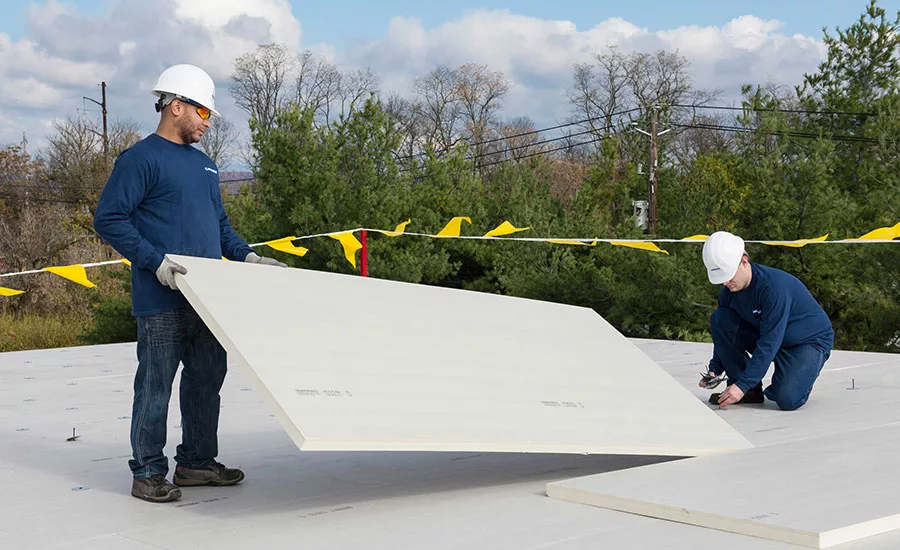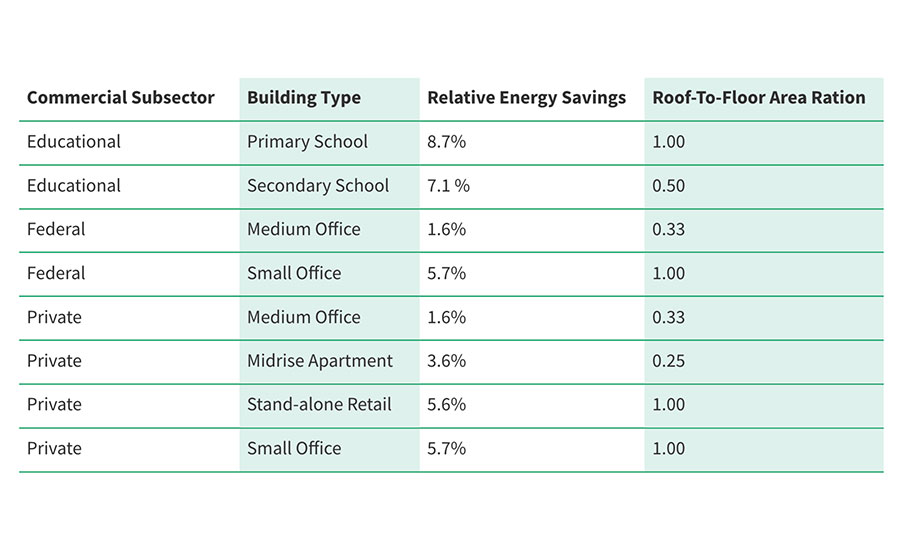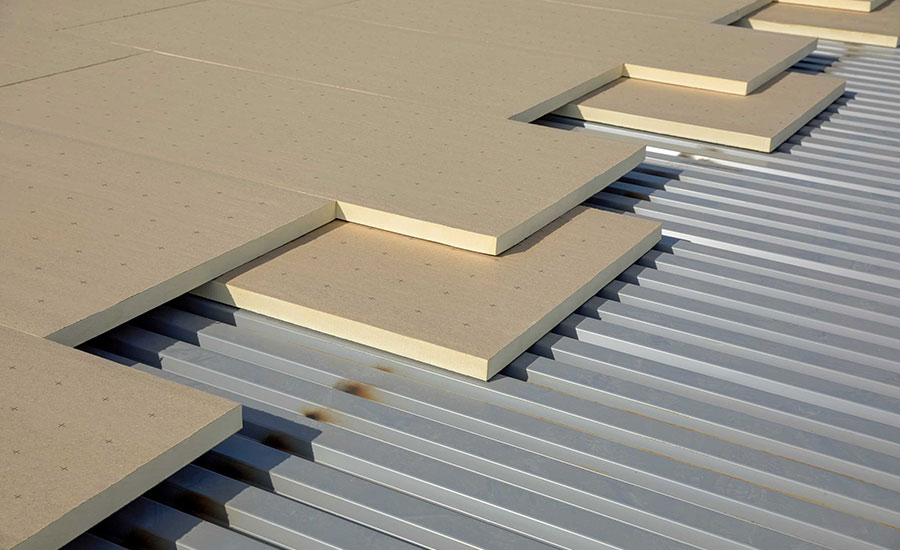Energy-Efficient Roof Replacements
The Keys to Energy Savings and Decarbonizing the Built Environment

Historically, the building industry has not been the center of the global conversation around sustainability. That’s even though the United States existing building stock consumes approximately 40% of the total energy and produces roughly 30% of annual greenhouse gas emissions. But there’s good news — as one of the world’s largest “ecosystems,” our industry can play a critical role in achieving global decarbonization goals and ensure a pathway to a brighter future.
To reduce these major impacts and drive positive change, the building industry is asking: Can we use today’s technology to reduce energy use and the associated greenhouse gas emissions?
Retrofits and Energy Savings
To help answer this question, a coalition of insulation trade associations commissioned a third-party-facilitated study that quantified the lifetime energy savings and carbon emission reductions that could accrue by completing simple, cost-effective insulation retrofit projects. The study was completed in three sections to assess the energy and emissions impacts from insulation improvements to residential, commercial, and industrial buildings.
Most applicable to the roofing industry, the commercial building study looked at the impact of code-compliant roof upgrades (at time of a roof replacement) and pipe insulation upgrades. The buildings analyzed in the commercial report represent both public and private structures and include the following building types: primary and secondary schools, stand-alone retail, small and medium office buildings, and mid-rise apartments (based on U.S. Department of Energy prototype buildings). The latest Commercial Buildings Energy Consumption Survey¹ reports that together, these buildings account for approximately 25% of existing building floor space in the U.S.
The total energy savings of the studied insulation retrofits (looking at both roof replacement and pipe insulation upgrades) are summarized in the table below. These numbers summarize energy savings across all climate zones and scenarios.

For each commercial building type, the roof replacement was responsible for most of the potential energy savings due to the relative size of the project. For example, the Polyisocyanurate Insulation Manufacturers Association (PIMA) published a summary of the study findings, which shows that over a 30-year period, upgrading roof insulation on existing commercial buildings can save building owners more than $65 billion dollars in energy costs. Similarly, it could also eliminate nearly 360 million metric tons of CO₂e emissions, which is equivalent to the annual energy use of more than 45 million American households.
Pivoting Focus
Generally, energy code requirements have focused on new construction, with significantly fewer resources given to the implementation and compliance for upgrades to existing buildings. But the growing focus on the nation’s decarbonization goals, combined with the significant environmental impacts associated with the existing U.S. building stock, has challenged policymakers to devote more resources towards compliance efforts targeting building alterations.
Last December, the DOE announced $45 million in competitive grants to help states and partnering organizations adopt and implement updated building energy codes. This funding is the first installment of a five-year, $225-million program established under the Bipartisan Infrastructure Law passed in 2021. This funding is in addition to the $1 billion available through the Inflation Reduction Act of 2022, which makes substantial investments in upgrading the performance of buildings through projects that include building envelope retrofits. Roof replacements are the most common envelope retrofits for existing commercial buildings.
The commercial building portion of the report released by ICF is one more policy tool that underscores the importance of addressing existing building envelope performance through innovative energy code compliance strategies.

A study determined that over a 30-year period, upgrading roof insulation on existing commercial buildings can save building owners more than $65 billion dollars in energy costs.
Roofing Contractor Considerations
Across the country, roof replacements on commercial buildings will become a valuable compliance option as building performance requirements and other new policies are adopted to achieve the aggressive energy savings and emissions reductions that are now necessary. This, coupled with new and expanded tax incentives available to building owners who implement code-compliant building envelope upgrades, puts opportunity with the roofing contractor.
As these commitments to sustainability initiatives continue to gain momentum, roofing contractors can benefit, making the case for energy-efficient roof replacements. The insulation study released by ICF supports this pathway forward, as it points to simple, cost-effective roof replacements as the keys to enhancing the performance of the buildings we live and work in. Backed by these findings, roofing contractors can focus on meeting their customers’ needs while playing a critical role in decarbonizing the built environment.
To learn more about the opportunities and benefits of energy-efficient roof replacement projects, visit www.polyiso.org/page/InsulationSavingsExistingBuildings.
Sources
1 U.S. Energy Information Administration (EIA)
Looking for a reprint of this article?
From high-res PDFs to custom plaques, order your copy today!






